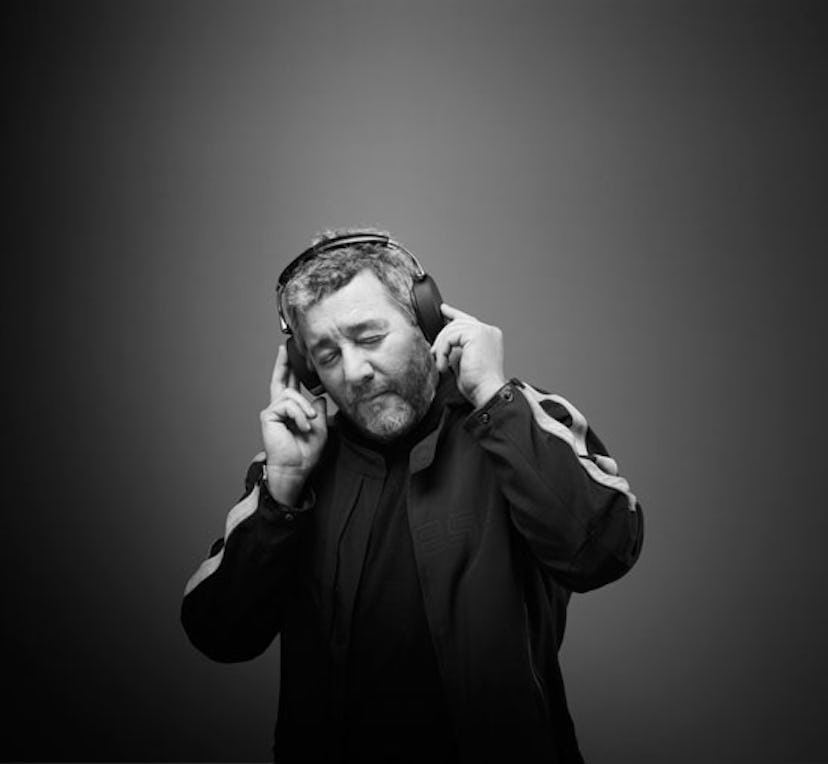Design 101 with Philippe Starck
“There is more intelligence in here than Boeing 30 years ago,” says designer Philippe Starck about the new Zik headphones he designed for Parrot. And indeed, all manner of Digital Signal Processing algorithms, patent-pending noise...

“There is more intelligence in here than Boeing 30 years ago,” says designer Philippe Starck about the new Zik headphones he designed for Parrot. And indeed, all manner of Digital Signal Processing algorithms, patent-pending noise canceling technology, bone conduction sensors, and much more come together to create a super-sleek set of wireless headphones with concert hall-quality acoustics.
But he had more on his mind than sensors and sound quality. Starck was dressed in two-tone yellow and gray jeans, laceless white tennis shoes and a well-worn windbreaker. The uber-sleek noise canceling headphones we were all there to see were hooked in the crook of his arm. It was a look that either said, “I just walked out of a pub”, or “I’m not worried about impressing you.” Either way, it was cool.
“The big difference between us and a cow is intelligence,” he starts in his thick French accent. Clearly, this was not a typical product launch. It was a Starckian launch and while we were there, ostensibly, to talk about the Zik headphones, he was there to talk about the Zik headphones by way of “dematerialism.”
“[We must] always increase intelligence and decrease materialism. Anything that does not follow this will become obsolete.” He pauses. “There is no future in design,” he proclaims as everyone’s ears perk. “As product becomes more bionic, there is no product.”
By bionic, he means futuristic and most importantly, integrated into our bodies. Intuitive. Biological. He demonstrates on the headphones: swiping his finger over the earpiece turns the volume up and down, rewinds and fast-forwards thanks to a myriad of sensors. He removes the headphones and struts around the room swiping in the same manner directly on his face. In the future, we will be the headphones.
“The product of tomorrow is our bodies,” he says. “We are the product. In the future, the body will become the final keyboard.”
And then came the next entirely unexpected statement: “I have discovered, a little bit late, that our job as designers was a mistake. We try today to make things nicer. It’s not the right thing to do,” he says. “We have to work to have less.”
As he puts it, it’s about “the elegance of the minimum.” It’s a design philosophy that has surely influenced his simple, intuitive designs—everything from the Ghost Chair to wind turbines—during his 40-plus-year career, but that is no longer what he means. It’s no longer simple design, it’s a simple life free of things entirely. “The more our life is full of everything, the less there is of us,” he says.
He begins to gesture in the air to draw a graph rocketing upwards and explains that we are producing too much. There is no need to create exponentially. He plateaus with his hand and then begins to slowly gesture downward. We need to create less. “Positive degrowth” is what he calls it.
He sees the future as a home that “is no more a product of more or less ugly products, it’s a sentimental space.” It would be a dematerialized space with room for simple pleasures he lists wistfully: “flowers, a child’s drawing . . . for dancing.”
And he is positive about the future. That dematerialism and advanced technology will “solve everything.” “It’s the comeback of the American Dream,” he says. “After World War II, we thought technology would solve everything. Now, it’s true.”
“This generation is the pivot of something new,” he says. “The only reason I am sad to be so old is 20 years from now, I will miss the El Dorado.”
The Zik noise canceling headphones go on sale in July and retail for $399.